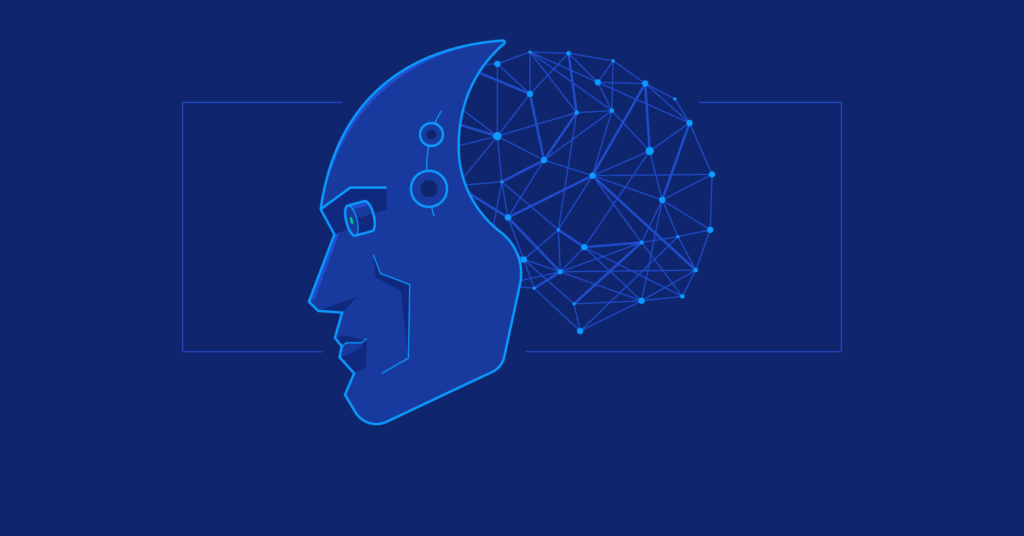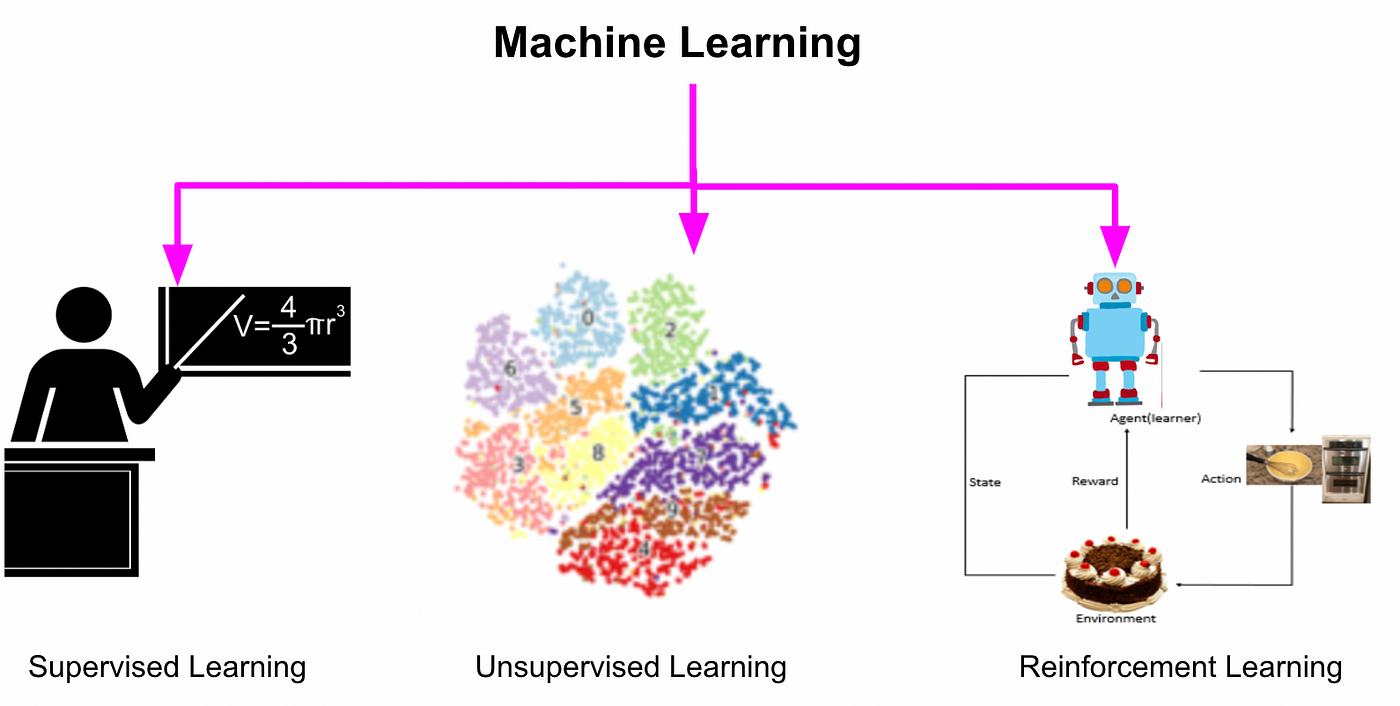Are you interested in working with cool technology and solving problems?
Machine learning might be the perfect fit! It’s all about teaching computers to learn from data and make decisions, and it’s in high demand. The World Economic Forum predicts that jobs in AI and machine learning will jump by 40% from 2023 to 2027.
So, how to learn machine learning skills in 2024? We’ll walk you through the basics, like what skills you need, the tools to learn, and how to create a study plan. Plus, we’ll suggest certifications to improve your resume.
Let’s dive in!
What is Machine Learning?
We’ve got a full article dedicated to exploring what machine learning is. However, at its core, machine learning (ML) is a branch of artificial intelligence (AI) focused on building systems that learn from data.
By identifying patterns in vast datasets, ML algorithms can make predictions or decisions without being explicitly programmed to perform specific tasks.
Additionally, this capability distinguishes ML from traditional software, where outcomes are predetermined by a set of rules.
Also, common machine-learning applications include self-driving cars, automated credit scoring, and even generative AI tools like ChatGPT.

The differences between artificial intelligence, machine learning & deep learning
The world of data & AI is full of terms and acronyms, and if you’ve paid attention to this space, you may see words like “Artificial intelligence,” “Machine Learning,” and “Deep Learning” being used interchangeably.
It’s worth defining these terms in more detail before we discuss how to approach your ML learning journey. We’ve got a full article exploring the differences between AI, ML, and DL, but to summarise:
- Artificial Intelligence: It represents a broader concept of machines capable of performing tasks in a way that we would consider “smart.” In this context, a simple calculator can be seen as a form of AI. You can also read our guide on how to learn AI skills to discover more.
- Machine Learning: It’s a subset of AI, involves algorithms enabling computers to learn from and make data-based decisions. A good example here is clustering customers based on their purchasing behaviors.
- Deep Learning: It is a subset of ML that uses neural networks with many layers (hence “deep”) to analyze patterns in data, mimicking the human brain’s approach to learning. Deep learning is responsible for the awe-inspiring results coming from AI in popular media. ChatGPT and self-driving cars are examples of deep learning in action.
Supervised Learning vs. Unsupervised Learning
In machine learning, there are two main approaches: supervised learning and unsupervised learning. Let’s break down what these terms mean:
Supervised Learning
This is like having a teacher supervise your learning. In supervised learning, we give the computer lots of examples with the answers included.
Additionally, the computer learns from these examples and tries to predict the answers for new examples.
For example, if we show the computer pictures of cats and dogs and tell it which is which, it can learn to recognize cats and dogs in new pictures.
Unsupervised Learning
In unsupervised learning, there’s no teacher. The computer looks for patterns in the data by itself. It tries to group similar things together.
For example, if we give the computer a bunch of customer data, it might find that some customers are similar because they buy similar products or are in the same age group. This can help businesses understand their customers better.

Why Learn Machine Learning Skills in 2024?
- Growing Field: Machine learning is in high demand. The World Economic Forum predicts a 40% increase in demand for AI and machine learning specialists from 2023 to 2027. Industries are increasingly relying on data-driven decision-making, creating a need for machine learning expertise.
- Lucrative Salaries: Machine learning professionals are among the highest-paid in the tech industry. Roles like Data Scientists, AI Engineers, and Machine Learning Engineers command salaries ranging from $126,000 to $194,000 according to Glassdoor.
- Intellectual Challenge: Machine learning is intellectually stimulating. It requires constant learning and adaptation to new technologies and methodologies, making it appealing to problem solvers and those passionate about pushing the boundaries of what machines can do.
- Career Growth: The field of machine learning offers excellent career growth opportunities. As the demand for AI and machine learning specialists continues to rise, professionals in this field can expect to advance their careers and take on more challenging roles.
- Impactful Work: Machine learning has the potential to make a significant impact on society. From improving healthcare outcomes to innovating transportation, machine learning is at the forefront of change.

How Long Does it Take to Learn Machine Learning?
The time it takes to master machine learning can vary widely based on your approach and background. For self-learners, it might take anywhere from a few months to over a year to develop a strong understanding of ML principles, programming (especially Python), mathematics, and various algorithms.
- Engaging in self-directed online courses, tutorials, and hands-on projects can help expedite this process.
- Formal education, such as a university degree in computer science, data science, or a related field, typically requires a three to four-year commitment. These programs provide comprehensive training in machine learning alongside other relevant subjects.
- Regardless of the path you choose, continuous learning, practical application, and staying updated with the latest developments in the field are essential for success in machine learning.
Finally, it’s important to note that machine learning is a career of lifelong learning, as new technologies and methodologies are constantly emerging.

How to learn Machine Learning skills in 2024: A step-by-step guide for beginners
Starting a journey to learn machine learning skills in 2024 can be both exhilarating and daunting, given its vast and intricate nature.
However, with a well-defined plan, access to the right resources, and a systematic approach, you can navigate through this fascinating field.
Here’s a step-by-step guide to help you embark on your machine learning journey in 2024:
Step 1: Establish a Strong Foundation
Before diving into machine learning, it’s essential to ensure you have a solid grasp of the foundational concepts. This includes:
- Basic Mathematics: While you don’t need to be a math expert, understanding concepts like linear algebra, calculus, and statistics is crucial. These principles underpin many machine learning algorithms.
- Basic Statistics: Familiarity with statistical concepts such as distributions, regression analysis, and probability is vital for analyzing data and building effective models.
- A Willingness to Learn: Machine learning is a rapidly evolving field, so having a growth mindset and a desire for continuous learning is essential.
Step 2: Develop Your Machine Learning Skills
Machine learning encompasses various subskills, each crucial for mastering the field. Some key areas to focus on include:
- Statistics: Learn about data distributions, statistical tests, and probability theories.
- Mathematics: Understand linear algebra, calculus, and probability, which are foundational for many machine learning algorithms.
- Programming: Python is the most popular language for machine learning, but R is also widely used. Familiarize yourself with the basics of programming and key libraries.
- Data Structures: Learn about arrays, lists, trees, and graphs, as they are essential for efficiently managing data in machine learning.
- Data Manipulation: Gain skills in cleaning, transforming, and preparing data for analysis, as data quality directly impacts model performance.
- Machine Learning: Understand supervised and unsupervised learning, model evaluation, and tuning.
- Deep Learning: Learn about training deep neural networks, particularly for complex tasks like image and speech recognition.
- Software Engineering: Develop skills in deploying machine learning models in production environments, including version control, continuous integration, and cloud services.
- Business Acumen: Understand how machine learning can solve real-world business problems and drive innovation.
Step 3: Learn Essential Machine Learning Tools and Packages
To work effectively in machine learning, familiarize yourself with key tools and packages. For Python, these include:
- Pandas: For data manipulation and analysis.
- NumPy: For scientific computing and numerical operations.
- Scikit-learn: For common machine learning tasks like classification and regression.
- XGBoost: For high-performance gradient boosting.
- TensorFlow and Keras: For building and training deep learning models.
For R, important packages include:
- Tidymodels: For modeling and machine learning tasks.
- Caret: For building and evaluating machine learning models.
- randomForest: For implementing the random forest algorithm.
- TensorFlow and Keras: For deep learning tasks.

Potential career options in 2024 for machine learning skills
Today, there is a wide range of career options available in the field of machine learning, each requiring a unique set of skills and expertise. Here are four key roles where machine learning skills are highly valued:
Data Scientist
Data Scientists analyze organizational data to extract insights and communicate findings to non-technical stakeholders. They are proficient in machine learning workflows, coding tools, and big data analysis.
- Machine Learning Engineer: These professionals develop and scale machine learning models for production, bridging the gap between data science and software engineering. They focus on automating model training, deployment, and monitoring.
- AI Developer: AI Developers combine software engineering with artificial intelligence to create applications that can perform tasks requiring human-like intelligence. They work with AI frameworks and development environments to integrate AI into systems.
- Research Scientist: Research Scientists in machine learning work on developing new algorithms and models, pushing the boundaries of AI. They conduct experiments, publish findings, and contribute to the scientific community’s understanding of AI and ML.

Conclusion
Starting a journey in machine learning is an exciting yet challenging endeavor. As you move forward, remember that continual learning and hands-on practice are essential.
So, stay curious, welcome challenges, and draw inspiration and support from the community. Your path in ML is yours alone; customize your learning to align with your goals and interests.
With dedication and perseverance, you’ll carve out your niche in the dynamic world of machine learning. For guided learning, you can join atomcamp’s market-ready Data Science and AI bootcamp that makes you all set for a career within a few weeks.

